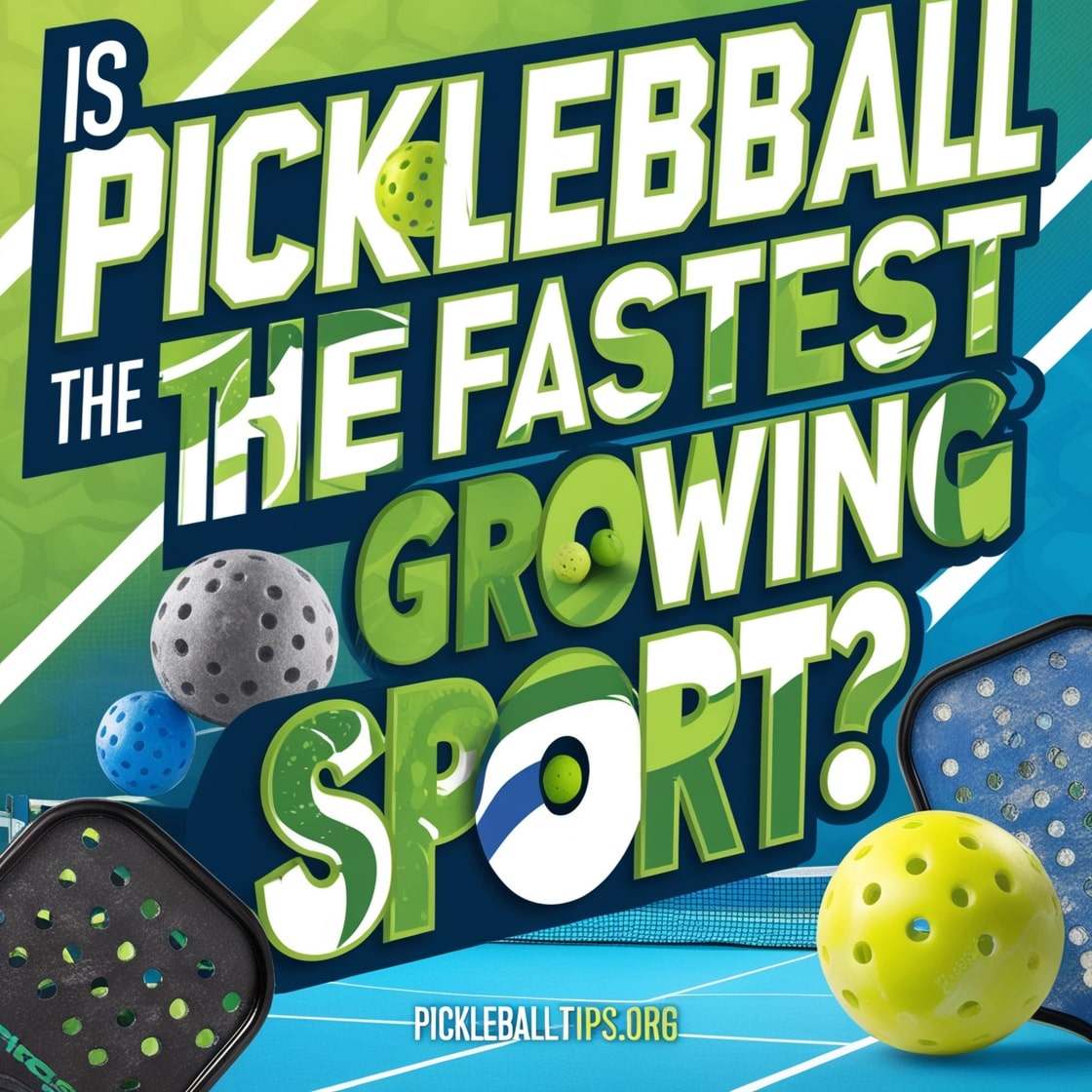In recent years, pickleball has captured the attention of sports enthusiasts, casual players, and even non-athletes, leading many to ask, is pickleball the fastest growing sport? From its humble beginnings in the 1960s to its meteoric rise in popularity today, this sport has become a global phenomenon. In this article, we’ll explore the history, growth factors, and why pickleball is a contender for the title of the fastest-growing sport.
The History of Pickleball
Pickleball was invented in 1965 by three friends—Joel Pritchard, Bill Bell, and Barney McCallum—on Bainbridge Island, Washington. What started as a backyard game has evolved into a professional sport with millions of players worldwide. Originally, the sport was intended to entertain families and friends, combining elements of badminton, tennis, and ping-pong.
The quirky name “pickleball” reportedly originated from Pritchard’s family dog, Pickles, who would chase after the ball during games. Others attribute the name to the “pickled” mix of sports that inspired the game. Regardless of its origins, pickleball has gained recognition and respect in the sporting world.
Why Is Pickleball Growing So Quickly?

Accessibility
One of the main reasons for pickleball’s rapid growth is its accessibility. The game is easy to learn, even for those who have never played a sport before. With a small court size, lightweight paddles, and a slower-moving ball, pickleball welcomes players of all ages and skill levels.
Low Cost
Compared to many sports, pickleball is affordable. Basic equipment includes paddles, a ball, and access to a court, which can often be found at local parks or recreation centers. This low cost of entry makes it appealing to a wide range of people.
Community-Oriented
Pickleball fosters a sense of community. With its doubles format and smaller courts, the sport encourages social interaction. This aspect has made it particularly popular among older adults looking for a fun, low-impact way to stay active and connected.
Health Benefits
Pickleball offers numerous physical and mental health benefits. It’s a great cardiovascular workout, improves hand-eye coordination, and enhances balance and agility. The social aspect also supports mental well-being, reducing feelings of isolation and promoting overall happiness.
Media and Celebrity Attention
The sport has also benefited from increased media coverage and celebrity endorsements. High-profile individuals like Bill Gates and athletes from other sports have praised pickleball, bringing more visibility to the game.
Pickleball by the Numbers
>>> See More: Are Pickleball and Tennis Nets the Same Height?
According to the Sports & Fitness Industry Association (SFIA), pickleball has seen a 39.3% increase in participation from 2019 to 2021, with over 4.8 million players in the United States alone. Organizations like USA Pickleball have also reported significant membership growth, further illustrating the sport’s popularity.
Globally, pickleball is gaining traction in countries like Canada, Australia, and India. International tournaments and the establishment of governing bodies are helping to solidify its place as a global sport.
The Role of Technology in Pickleball’s Growth
Technology has played a crucial role in pickleball’s expansion. Social media platforms have amplified its reach, with influencers and players sharing tips, tricks, and match highlights. Online communities and forums dedicated to pickleball provide new players with resources and opportunities to connect with others.
Streaming platforms have also made professional pickleball matches accessible, attracting more viewers and inspiring them to take up the sport.
Challenges to Pickleball’s Growth
While pickleball’s growth is impressive, it’s not without challenges. Critics argue that the rapid increase in demand for courts has caused conflicts with other sports, particularly tennis. Noise complaints from nearby residents have also been a concern in some communities.
To address these issues, many local governments and private organizations are investing in dedicated pickleball facilities, ensuring that players have appropriate spaces to enjoy the game.
Is Pickleball the Fastest Growing Sport?
When considering participation rates, accessibility, and community impact, pickleball certainly makes a strong case as the fastest-growing sport. Its unique combination of inclusivity, affordability, and health benefits has allowed it to resonate with a broad audience. The statistics and cultural momentum behind pickleball further solidify its position as a sport on the rise.
How to Get Started with Pickleball
If you’re intrigued by the idea of playing pickleball, getting started is simple. Follow these steps:
- Find a Court: Check local parks, community centers, or dedicated pickleball facilities in your area.
- Get Equipment: Purchase or borrow a paddle and ball. Many beginner sets are available at affordable prices.
- Learn the Rules: Familiarize yourself with the basic rules and scoring system. Plenty of online tutorials can help.
- Join a Group: Many communities have pickleball clubs or social groups that welcome new players.
- Practice: Start with casual games to build your skills and confidence.
Conclusion
So, is pickleball the fastest growing sport? Based on the evidence, it’s hard to argue otherwise. Its accessibility, health benefits, and community-focused nature have propelled it to the forefront of recreational activities worldwide.
Thank you for visiting pickleballtips.org and taking the time to learn about this exciting sport. Whether you’re a seasoned player or just getting started, pickleball offers something for everyone. See you on the court!
